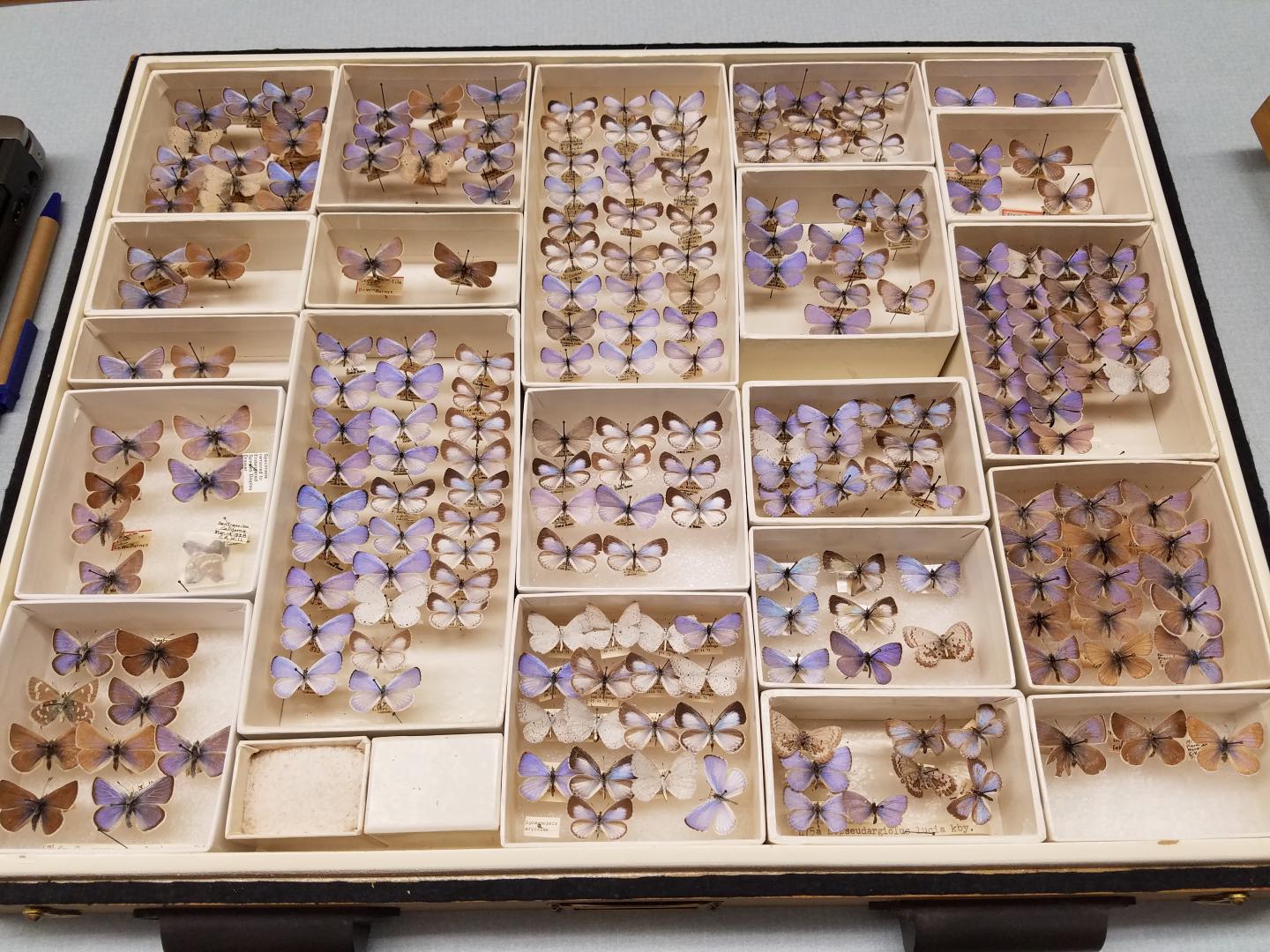Not an accolade anyone wants, but for the Xerces blue butterfly, its extinction is considered the first of any American insect species to have been directly caused by humans. Last seen in 1941, genetic testing proved that the Xerces blue butterfly was a distinct species, and its disappearance was the first human-led insect extinction.
Back in 2021, scientists analyzed the DNA of a 93-year-old Xerces blue butterfly (Glaucopsyche xerces), which had been part of a collection at the Field Museum in Chicago. Enough unique DNA was found to define it as its own, unique species, and silenced any doubters still questioning this as the first US insect extinction at the hands of humans.
“It’s interesting to reaffirm that what people have been thinking for nearly 100 years is true, that this was a species driven to extinction by human activities,” said Felix Grewe, lead author and co-director of the Field’s Grainger Bioinformatics Center, in a statement at the time.
The Xerces blue, aptly named for its iridescent blue wings, was native to the San Francisco Peninsula and was last seen in the early 1940s, less than a century after it was initially identified and described in 1852. It is believed that growing urban development caused considerable disturbance and habitat loss, ultimately wiping out the butterflies for good.

Female (brown) and male (blue) Xerces blue butterfly on an Acmispon glaber or deerweed plant, which they ate.
Image credit: Martí Franch
The confusion surrounding the species and its extinction stems from its similarities to another, very widespread species, known as the silvery blue. According to study author and entomologist at Cornell University, Corrie Moreau, the two species shared many traits, which led some to believe that the Xerces blue was an isolated population of this broader species.
Fortunately, Moreau had the Field Museum’s extensive collection of Xerces blue at her disposal to help her prove the skeptics wrong. After the “nerve-wracking” process of collecting a sample from the abdomen of a butterfly that was collected in 1928, DNA was extracted and analyzed.
Whilst DNA is a notoriously stable molecule, it does still degrade over time. The team, therefore, had to compare DNA fragments from multiple cells to piece the genome together – sort of like a really complicated, micro-scale jigsaw. Or, as Moreau put it: “It’s like if you made a bunch of identical structures out of Legos, and then dropped them. The individual structures would be broken, but if you looked at all of them together, you could figure out the shape of the original structure.”

The collection of extinct Xerces blue at Chicago’s Field Museum.
Image credit: Field Museum
Once the genetic sequence had been patchworked together, it was compared against that of the silvery blue butterfly. The two were different enough to finally prove that they are separate species and that, therefore, the Xerces blue had been made extinct. “The Xerces blue butterfly is the most iconic insect for conservation because it’s the first insect in North America we know of that humans drove to extinction,” said Moreau.
The team’s focus now is on conservation efforts, as opposed to a Jurassic Park-esque resurrection – “let’s put that effort into protecting what’s there and learn from our past mistakes,” said Grewe.
However, in 2023, scientists sequenced the whole genome of the Xerces blue, positing it could pave the way for de-extincting the species.
“The Xerces Blue butterfly is an excellent candidate for de-extinction because it is an insect that disappeared relatively recently, so the ecological impact of its reappearance is reduced, and there is no risk of pests or excessive proliferation due to the limited time of appearance of the adults and their ecological specialisation. We therefore hope that having its complete genome may help in future de-extinction initiatives,” said Carles Lalueza-Fox, director of the Natural Sciences Museum in Barcelona, who co-led the study.
We are currently in the midst of an “insect apocalypse”, and possibly a sixth mass extinction, meaning it is more vital than ever that we protect other insects and other species from meeting the same fate as the Xerces blue. Not only for their own populations, but for maintaining biodiversity and healthy ecosystems. As Moreau said, insects “aerate the soil, which allows the plants to grow, and which then feeds the herbivores, which then feed the carnivores. Every loss of an insect has a massive ripple effect across ecosystems.” Or a butterfly effect, if you will.
Source Link: Xerces Blue Butterfly: America's First Human-Caused Insect Extinction